How to Get Rid of Mold Inside and Outside of Your Home

By Marilyn Syarto
Learning how to get rid of mold in your home is extremely important. Mold of any color is ugly, bad for your respiratory health, smells, rots wood and other important materials, and can spread if not checked. We’ve all heard horror stories about homeowners who have had to abandon mold-infested homes. Although it’s unlikely that these extreme scenarios will happen to you, you still can take steps to get rid of mold inside and outside of your home and prevent mold from taking hold.
Whether you're looking for how to get mold out of a room or get rid of mold in a house entirely, this guide will give you the right tools and methods to help you clean it all up.
Photo via Wet & Forget
What Is Mold and What Does It Look Like?
It helps to know a little about what mold is and what the difference is between mold and mildew. Mold is a fungus that spreads and grows by spores. It’s also a normal part of nature and our environment and it exists virtually everywhere. In fact, mold is important to our ecosystem in that it helps in the decomposition of dead organic matter (when it’s outdoors, that is), in the production of foods such as cheese, and antibiotics such as penicillin.
Mildew is a type of mold. The difference is in the colors and textures of both. Molds are darker in color (black, green, bluish), somewhat fuzzy, raised, and slimy. Mildew is lighter in color (white and gray), lies flat against a surface, and turns powdery. Multiple types of mold can grow in the same spot. Here are three of the most common types of mold:
- Cladosporium: brown, green, or black and found on wood, carpets, fabrics, and in HVAC ducts.
- Penicillium: fuzzy blue, green, or yellow grown where there’s been water damage, such as under carpets and in basements and insulation.
- Aspergillus: green, white, or gray with dark spots and powdery (almost like mildew) and grows in fabrics, walls, attics, basements, and dry food.
Black Mold
Causes of Mold
Mold is everywhere and spores can easily enter your home through open doorways, windows, vents, and heating and air conditioning systems. Mold spores from outdoors can enter our homes through our clothing and shoes, and pets. But, mold needs the right conditions to thrive. Consistent moisture in poorly ventilated spaces can cause mold spores to grow, thrive, and spread indoors. Certain building materials made with large traces of cellulose (cardboard, paper products, ceiling tiles, wood) are especially susceptible to mold because their nutrients can feed mold and encourage mold to grow in size.
Mold Health Risks
Some people are more sensitive to mold than others, and having mold in the home can exacerbate health issues. Sometimes, you can be at risk for infections if you already have allergies, asthma, COPD, or cystic fibrosis. Other sensitive people may have these symptoms if exposed to mold spores:
- Coughing
- Eye irritation
- Headache
- Lung irritation
- Runny nose and congestion
- Sneezing
- Skin rash
- Sore throat
- Wheezing
How to Prevent Mold
While preventing any and all traces of mold is almost impossible, you can certainly keep it under control in your home. The Centers for Disease Control (CDC) suggests the following measures for controlling mold in your home:
- Add mold inhibitors to paints before painting any room in your home, which are made with antimicrobial substances that work to prevent mold spores from growing.
- Clean your bathroom and kitchen with cleaners that include mold-killing ingredients.
- Place small containers of moisture-absorbing crystals or beads, like DampRid, around your home in humid areas where you do not have a dehumidifier, like bathrooms and closets. Be sure to replace the product frequently.
- Remove or replace soaked and wet carpets and upholstery that cannot be easily dried and are located in high humidity areas such as basements and bathrooms.
- Fix leaks in your roof, walls, and plumbing; a roof leak can lead to a bad case of attic mold.
- Use exhaust fans in your kitchen and bathroom at all times, even when you are not taking a shower, to keep the air in these humid areas flowing freely.
- Make sure your dryer is correctly vented to the outside of your home.
Checking Humidity in Your Home
The most important caution you can take to control mold is to lower your indoor humidity levels. The humidity in your home should be no higher than 50 percent. You can check the levels with a simple meter that you can also buy in multipacks to keep around your home. Levels will change throughout the day, so check several times a day season to season. Air conditioning and running a dehumidifier (especially in a humid basement) can help keep your levels low.
Mold Cleaning Protection Tips
It’s vitally important that you wear protective gear to tackle any type of mold in your home to prevent mold spores from getting on you. Wear the following items when working with mold:
- A face mask or an N-95 respirator to help you avoid inhaling mold spores
- Protective rubber gloves that extend to at least the middle of your forearm
- Eye goggles that fully encase your eyes and do not have any ventilation holes so spores do not end up in your eyes
- Long pants and a shirt with long sleeves so spores do not hit your skin
- Waterproof boots
Before working on cleaning up mold, you should also open windows in the room you are cleaning. If you’re using a bleach cleaner, do not use other cleaners with it—doing so can create toxic fumes.
Photo via Wet & Forget
How to Remove Mold from Walls
Although you will certainly find mold outdoors, it’s most important to remove it from inside your home first. As soon as you spot mold on walls, carpet, fabric, or appliances, follow these steps to eradicate it.
Whether mold is spotted on the walls of your basement or your pantry, this is the best way to remove mold from concrete and painted drywall.
Tools and Materials Needed:
- Bleach
- Water
- Bucket
- Scrub brush
- Heavy-duty sponge
- Protective gear (see “Mold Cleaning Protection Tips” above)
- Old towels
- Blow dryer (optional)
- Mildew stain remover
- Sealable plastic bag
Step 1: Remove Adjacent Materials
If you see mold growing on your basement wall, it’s best to remove and throw out nearby carpeting and cardboard boxes—it’s likely spores have reached those damp items, too.
Step 2: Mix Bleach and Water
In a bucket, mix three parts water to one part bleach.
Step 3: Scrub the Wall
Using the brush and sponge, aggressively scrub the wall until the mold has disappeared. In spots that seem to have more mold (the spots with more mold may appear darker), leave the bleach solution on the wall for a few minutes to soak in and then scrub.
Repainting Drywall
Step 4: Dry the Wall
After scrubbing, completely dry the wall with the old towel. Use a blow dryer if necessary to complete the job.
Step 5: Remove Stains
The mold will likely leave some stains behind. You can remove these by wiping down the area with an old towel and a specially formulated mildew stain remover.
Step 6: Discard Sponge and Brush
Throw the sponge and brush away in the sealable plastic bag to isolate the mold spores. Take the bag out of the house and throw it in an outdoor garbage can.
Pink Mold
How to Remove Mold from Carpet
Your carpet may have become wet from a leak on the wall, ceiling, or floor beneath it if it’s in a basement. The moisture then became stuck in the fibers and because the material could never dry completely, it made a perfect home for mold to grow. Moldy carpeting is especially concerning if your children and pets play or sit on the rugs.
It is extremely difficult to get mold spores completely out of carpeting because of the dense fibers. Even a professional may suggest removal. If there is a very small area (a couple of inches at best) of mold, you can try removing it yourself, but any more mold beyond that means the carpet may not be worth saving.
This is the best way to get rid of mold on carpet. You can also try this carpet mold removal method on mattresses and upholstered furniture that have small spots of mold, but do not attempt this if the item is largely covered in mold.
Tools and Materials Needed:
- Plastic sheeting
- Painter’s tape
- Portable fan(s)
- Stiff brush
- Vacuum with HEPA filter (these filters remove tiniest airborne particles, such as mold)
- Plastic sealable bags
- Carpet cleaner with mold remover (not bleach)
- Blow dryer
- Protective gear
Step 1: Protect Surrounding Areas
Isolate the moldy part of the carpet. Do this by laying down plastic sheeting on the area around the spot with mold. You do not want the spores to jump up and become lodged in carpeting that is not moldy. For better protection, you can use painter’s tape to try to hold the plastic down better on the unaffected areas of carpeting while you work on cleaning the mold. Close doors or put plastic up on door openings with painter’s tape to prevent mold spores from traveling into another room.
Step 2: Ventilate
Make sure you ventilate the area where you are working. Place portable fans pointed out the window to keep air flowing.
Step 3: Scrub the Carpet
With the brush only, scrub the molded area of the carpet. Put any loosened fibers with mold on them into the sealable plastic bag or use the HEPA filtered vacuum to capture the mold.
Step 4: Clean the Spot
Follow the manufacturer’s directions on the carpet cleaner to thoroughly clean the spot.
Step 5: Dry the Spot
Dry the spot immediately by blotting the moisture with a towel with a fan pointed at the area. If the spot is small enough, use a blow dryer to accelerate drying time.
How to Remove Mold from Fabrics
You may encounter mold on clothing that has been stored in a humid closet or put away while still damp. If you see mold only in a small spot, it’s fixable with the following steps. If the item is covered in mold, it is best to discard the piece of clothing in a sealable plastic bag to contain the spores.
Tools and Materials Needed:
- Old toothbrush
- White vinegar
- Sealable plastic bags
- Bucket
- Laundry detergent
- Washing machine
Step 1: Brush the Mold
Before presoaking or washing, saturate the mold with white vinegar. Then use the toothbrush to begin removing the mold by scrubbing. Once you are done with the toothbrush, place it in the sealable bag and discard it outdoors in a garbage bin.
Step 2: Presoak the Item
Fill a bucket with water and add one cup of vinegar. Mix. Add the garment and let soak in the solution for an hour. This can also help kill random spores that may have lodged in other parts of the garment.
Step 3: Wash in Hot Water
Wash your garment alone in the hottest temperature of water it can take. Use regular laundry detergent.
Step 4: Dry the Garment
Dry the garment in your dryer in the hottest setting possible or air dry it outdoors in the sun until it thoroughly dries.
Photo via Stacy Davis
How to Remove Mold from Appliances
You may encounter mold in your refrigerator or even your dishwasher. That’s because mold loves dark, moist environments of closed appliances, and damp remnants of rotting food certainly help spores thrive. You may find mold in your appliances if they have been unplugged or unused for a time, like during a power outage. Your best bet to get rid of mold in appliances is by using white vinegar following these steps. Don’t use any other type of vinegar, such as apple cider vinegar—the sugar content will help mold spores grow.
Tools and Materials Needed:
- Plastic sheeting
- Painter’s tape
- 1 gallon of distilled white vinegar
- Spray bottle
- Rags
- Paper towels
- Plastic resealable bags
- Protective gear
Step 1: Protect the Area
Put plastic sheeting on the floor around the appliance and use painter’s tape to cover doors and openings with the sheeting.
Step 2: Remove Parts
You’ll need to strip down thoroughly clean all parts of the affected appliance. Remove baskets, bins, and shelving. Put them outdoors on a plastic sheet to clean separately.
Step 3: Add Vinegar to Bottle
Fill a spray bottle with undiluted white vinegar. (The vinegar’s smell will disappear after you’re finished cleaning, but you need the vinegar in full strength to clean the appliance.)
Step 4: Spray Inside Appliance
Spray the vinegar into every nook and cranny of the appliance.
Mold hides under the rubber seals and gaskets of appliances. Be sure to check rubber door seals of refrigerators and dishwashers and wipe them out with a vinegar-soaked rag.
Step 5: Wipe with Rags
Use rags and paper towels to clean the appliance and its removable components and scrub away the mold. Immediately throw the rags and paper towels into sealable plastic bags. Discard plastic bags outside in a garbage bin.
Step 6: Dry the Appliance
Dry the appliance and its components thoroughly with dry rags. Replace components. Discard rags into sealable plastic bags and place them in an outdoor garbage bin.
Photo via Kerry Ann Bruno
How to Get Rid of Mold Outside the House
You’ll be happy to know that the green slime that’s gunking up your siding, stone walkways, patio, and deck isn’t usually mold. It’s most likely algae. It’s easy to remove using water plus white vinegar. Algae blooms can still be toxic to humans, so it’s best to wear protective gear as you would cleaning mold. Here’s how to remove this growth from your siding—be sure to perform these steps on a sunny, dry day so the warmth can air-dry the areas you scrubbed.
Tools and Materials Needed:
- Drop cloths
- Garden hose and spray attachment
- Hard-bristled brush
- 1.5 cups of white vinegar
- 1 gallon water
- Bucket
- Protective gear
- Pressure washer (optional)
- Sealable plastic bag
Step 1: Lay Drop Cloths
Place protective drop clothes over any plants near where you will remove algae.
Step 2: Rinse Surface
Use a garden hose to rinse down the surface with the green slime. This will wash away a little bit of the algae.
Step 3: Mix the Cleaning Solution
In a bucket, mix the vinegar and water.
Step 4: Scrub the Surface
Use your scrub brush to scrub the algae off the siding.
If scrubbing isn’t helping, try using the power of a pressure washer on low psi (1,300 to 1,600 psi) to help you remove the algae.
Step 5: Rinse
After scrubbing, rinse down the area with water from the hose.
Step 6: Discard Scrubbing Tools
Place the scrubbing brush you used in the sealable plastic bag. Throw it away in an outdoor garbage can.
Photo via Wet & Forget
When to Hire a Professional
There are a few guidelines that help you to know when you need to hire a mold abatement/remediation company. The EPA recommends that if the area of mold you see is larger than three feet by three feet (roughly the size of a large square wall mirror), you should call a professional. Here are other signs that you need to call in a mold removal expert:
- You can smell mold, but you can’t see it because it’s likely hidden in the walls, wallpaper, under the flooring, or in the ceiling.
- You’ve had standing water indoors from a flood for over 24 hours during hot and humid weather or for 48 hours in cold weather.
- You live in a high-humidity area and you can see the area of mold expanding every day.
- If you or your family know you have mold and are experiencing respiratory problems (stuffy nose, sore throat, wheezing or coughing, and burning eyes), skin rashes, or have compromised immune systems.
If you’re not certain you have mold, hire a mold inspector that also handles remediation. Make certain that the mold remediation contractor you are hiring is certified or trained in mold remediation in homes. The EPA does not have a certification program, however, certain states may require certifications, training, and exams. Ask contractors about qualifications, training, experience, and check references for removal experts you’re considering hiring. Some mold remediation contractors may even have mold-sniffing dogs for truly hidden mold.
Have you remedied mold in your home before? Tell us about it in the comments below!
Enjoyed the project?
Comments
Join the conversation
-
-
 AvySobby
on May 15, 2023
AvySobby
on May 15, 2023
It's definitely an issue that homeowners should take seriously, as mold growth can cause respiratory health problems and damage to your property. While some minor mold issues can be addressed with DIY methods, it's important to seek the help of a professional for more severe cases. That's where Mould Removal & Remediation Services come in - they have the expertise and tools to effectively remove mold and prevent it from coming back. Thanks again for sharing this helpful guide!
-





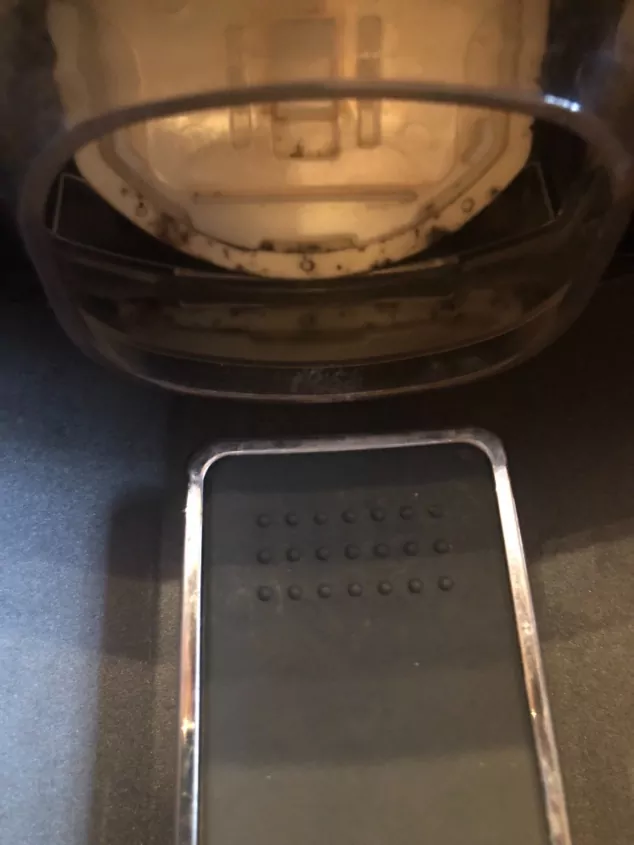







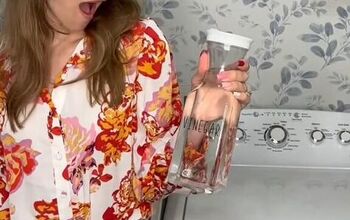




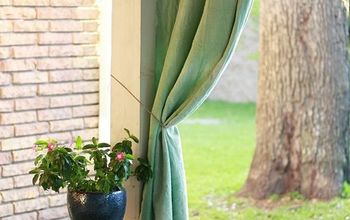


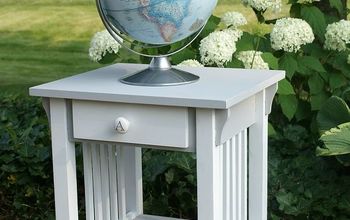

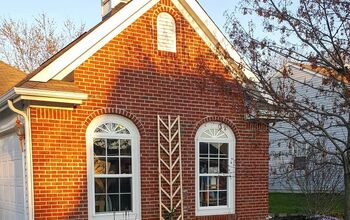




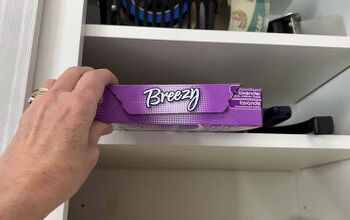


Frequently asked questions
Have a question about this project?